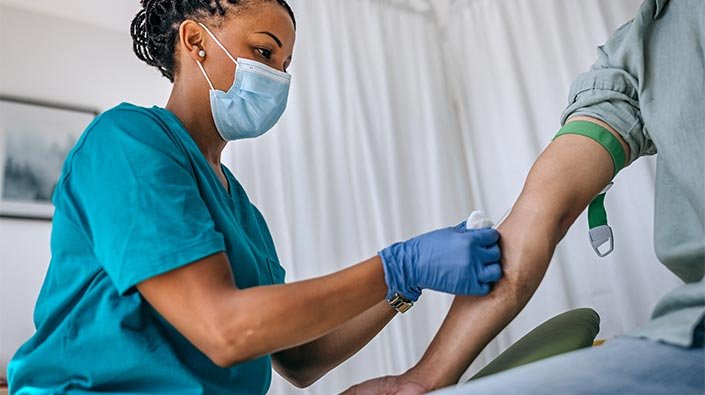Regulatory Changes Impacting Procurement and Maintenance of Phlebotomy Equipment in Hospitals in the United States
Summary
- Regulatory changes have a significant impact on the procurement and maintenance of Phlebotomy Equipment in hospitals in the United States.
- Hospitals must stay up-to-date on regulatory changes to ensure compliance and provide the best patient care.
- Proper management of Phlebotomy Equipment is essential for the efficient operation of hospitals and the safety of patients.
Introduction
Phlebotomy Equipment plays a crucial role in hospitals by enabling healthcare professionals to collect blood samples for diagnostic testing. However, the procurement and maintenance of this equipment can be challenging due to regulatory changes that impact hospitals in the United States. In this article, we will explore how regulatory changes affect the procurement and maintenance of Phlebotomy Equipment in hospitals, as well as the importance of proper management of this equipment for the efficient operation of healthcare facilities.
Regulatory Changes Impacting Hospitals
Regulatory changes are constantly occurring in the healthcare industry, and hospitals must stay informed about these changes to ensure compliance and provide the best patient care possible. When it comes to Phlebotomy Equipment, regulatory changes can impact various aspects of procurement and maintenance, including safety standards, quality requirements, and documentation procedures.
Safety Standards
Safety standards for Phlebotomy Equipment are established by regulatory bodies such as the Food and Drug Administration (FDA) and the Occupational Safety and Health Administration (OSHA). These standards are put in place to protect healthcare workers and patients from potential hazards associated with the use of Phlebotomy Equipment. Hospitals must ensure that all Phlebotomy Equipment meets these safety standards to prevent injuries and ensure the accuracy of blood sample collection.
Quality Requirements
Regulatory changes can also impact the quality requirements for Phlebotomy Equipment used in hospitals. For example, the FDA may introduce new guidelines for the manufacturing and use of blood collection devices to improve their effectiveness and reliability. Hospitals must stay up-to-date on these quality requirements to ensure that they are using the best possible equipment for blood sample collection.
Documentation Procedures
Proper documentation is essential in healthcare settings for tracking the use and maintenance of Phlebotomy Equipment. Regulatory changes may introduce new documentation procedures that hospitals must follow to maintain compliance with reporting requirements. It is crucial for hospitals to have a robust documentation system in place to track the procurement, maintenance, and usage of Phlebotomy Equipment.
Importance of Proper Equipment Management
Proper management of Phlebotomy Equipment is essential for the efficient operation of hospitals and the safety of patients. By following best practices for procurement and maintenance, hospitals can ensure that their Phlebotomy Equipment is always in good working condition and ready for use when needed. Here are some key reasons why proper equipment management is important:
- Ensure Compliance: By following regulatory guidelines for the procurement and maintenance of Phlebotomy Equipment, hospitals can maintain compliance with safety and Quality Standards.
- Improve Patient Safety: Properly maintained Phlebotomy Equipment reduces the risk of errors and injuries during blood sample collection, ultimately improving patient safety and care.
- Enhance Efficiency: Well-managed equipment ensures that healthcare professionals can quickly and accurately collect blood samples, leading to more efficient diagnostic testing and treatment.
Conclusion
In conclusion, regulatory changes have a significant impact on the procurement and maintenance of Phlebotomy Equipment in hospitals in the United States. Hospitals must stay up-to-date on these changes to ensure compliance with safety and Quality Standards, as well as to provide the best possible patient care. Proper management of Phlebotomy Equipment is crucial for the efficient operation of healthcare facilities and the safety of patients. By following best practices for procurement, maintenance, and documentation, hospitals can ensure that their Phlebotomy Equipment meets regulatory requirements and functions effectively in the healthcare setting.

Disclaimer: The content provided on this blog is for informational purposes only, reflecting the personal opinions and insights of the author(s) on the topics. The information provided should not be used for diagnosing or treating a health problem or disease, and those seeking personal medical advice should consult with a licensed physician. Always seek the advice of your doctor or other qualified health provider regarding a medical condition. Never disregard professional medical advice or delay in seeking it because of something you have read on this website. If you think you may have a medical emergency, call 911 or go to the nearest emergency room immediately. No physician-patient relationship is created by this web site or its use. No contributors to this web site make any representations, express or implied, with respect to the information provided herein or to its use. While we strive to share accurate and up-to-date information, we cannot guarantee the completeness, reliability, or accuracy of the content. The blog may also include links to external websites and resources for the convenience of our readers. Please note that linking to other sites does not imply endorsement of their content, practices, or services by us. Readers should use their discretion and judgment while exploring any external links and resources mentioned on this blog.
